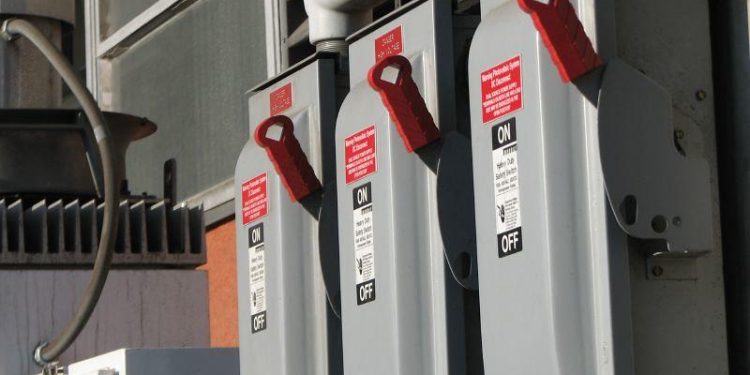In the ever-evolving landscape of renewable energy, high-voltage solar systems are emerging as a powerful ally for industrial facilities seeking to reduce their carbon footprint while enhancing operational efficiency. As the sun casts its unwavering gaze upon vast expanses of rooftops and open lands, these innovative systems harness its energy with unparalleled precision, transforming it into a formidable force that can drive the engines of industry. This article delves into the transformative potential of high-voltage solar systems, exploring how they are reshaping the energy paradigms of industrial facilities worldwide. By tapping into the boundless power of the sun, industries are not only reducing their dependency on traditional energy sources but also paving the way for a sustainable future. Join us as we illuminate the intricate dynamics of high-voltage solar technology and its pivotal role in powering the industries of tomorrow.
Harnessing the Sun: Unleashing the Potential of High-Voltage Solar Systems
In the quest for sustainable energy solutions, industrial facilities are increasingly turning to solar power as a viable option. High-voltage solar systems are at the forefront of this transition, offering significant advantages over traditional setups. These systems operate at higher voltages, which reduces the current and, consequently, the energy loss in transmission. This efficiency boost translates into greater energy savings and reduced operational costs, making them particularly appealing for large-scale industrial applications.
Key benefits of adopting high-voltage solar systems in industrial settings include:
- Enhanced Efficiency: By operating at higher voltages, these systems minimize energy loss, ensuring more power reaches its destination.
- Reduced Infrastructure Costs: The need for smaller gauge wiring and fewer inverters leads to lower installation and maintenance expenses.
- Scalability: These systems are easily scalable, allowing facilities to expand their solar capacity as needed without significant overhauls.
- Improved Safety: Modern high-voltage solar technologies incorporate advanced safety features, ensuring secure operation even at higher voltages.
By integrating these advanced solar solutions, industrial facilities can not only achieve greater energy independence but also contribute to a more sustainable future. The shift to high-voltage solar systems is not just an upgrade in technology—it’s a commitment to efficiency and environmental stewardship.
Navigating the Grid: Integrating Solar Power into Industrial Infrastructure
Industrial facilities, with their sprawling rooftops and extensive land spaces, present a prime opportunity for harnessing solar energy through high-voltage solar systems. These systems are designed to cater to the substantial energy demands of large-scale operations, offering a sustainable alternative to traditional power sources. High-voltage solar installations not only reduce operational costs but also enhance energy security by providing a reliable and consistent power supply. As industries strive to minimize their carbon footprint, integrating solar power becomes a pivotal strategy, allowing for significant reductions in greenhouse gas emissions.
Embracing solar technology involves several key considerations to ensure a seamless integration into existing infrastructures. Among these are:
- Assessing Energy Needs: Evaluating the facility’s energy consumption patterns to design an appropriately sized system.
- Infrastructure Compatibility: Ensuring that existing electrical systems can accommodate the high-voltage outputs.
- Regulatory Compliance: Adhering to local and international standards and regulations governing solar installations.
- Maintenance and Monitoring: Implementing systems for regular upkeep and real-time monitoring to maximize efficiency and longevity.
As industries pivot towards greener practices, high-voltage solar systems emerge as a cornerstone of sustainable development, merging economic viability with environmental stewardship.

Maximizing Efficiency: Advanced Technologies for Solar Energy Conversion
In the realm of industrial energy solutions, high-voltage solar systems are emerging as a revolutionary force, transforming the way large-scale facilities harness the power of the sun. These systems are designed to handle substantial energy loads, making them ideal for industrial applications where efficiency and capacity are paramount. By converting sunlight into electrical energy at higher voltages, these systems reduce energy loss and enhance the overall performance of solar power installations. This advanced technology not only optimizes energy conversion but also ensures a more reliable and robust power supply for industrial operations.
- Increased Energy Output: High-voltage systems can support greater energy demands, crucial for industries with large power requirements.
- Improved Efficiency: By operating at higher voltages, these systems minimize energy losses that typically occur during transmission.
- Enhanced Scalability: Industrial facilities can easily expand their energy capacity by integrating additional solar modules into existing systems.
- Reduced Infrastructure Costs: Fewer cables and connections are needed, cutting down on material and installation expenses.
- Better Grid Compatibility: High-voltage solar systems are designed to seamlessly integrate with existing power grids, facilitating smoother energy distribution.
Embracing these advanced technologies allows industrial facilities to not only reduce their carbon footprint but also achieve significant cost savings in energy consumption, paving the way for a more sustainable future.

Strategic Implementation: Recommendations for Industrial Solar System Deployment
When deploying high-voltage solar systems in industrial facilities, a meticulous strategic implementation plan is crucial. This plan should start with a comprehensive assessment of the facility’s energy needs, existing infrastructure, and potential for solar integration. Engage stakeholders from different departments early in the process to ensure alignment and gather valuable insights. Collaborate with energy consultants to tailor solutions that meet both current and future demands, while also considering scalability for expansion.
Consider the following recommendations for effective deployment:
- Site Selection: Choose locations with optimal sunlight exposure and minimal shading, ensuring the panels can capture maximum solar energy.
- Energy Storage Solutions: Implement robust storage systems to manage energy supply efficiently, reducing reliance on the grid during peak hours.
- Regulatory Compliance: Stay updated with local regulations and obtain necessary permits to avoid legal setbacks.
- Maintenance Planning: Establish a routine maintenance schedule to ensure long-term system efficiency and longevity.
- Data Monitoring: Integrate advanced monitoring systems to track performance and identify potential issues proactively.
By following these strategic recommendations, industrial facilities can optimize their transition to high-voltage solar systems, enhancing both sustainability and operational efficiency.
Final Thoughts
In the ever-evolving landscape of energy solutions, high-voltage solar systems stand as a beacon of innovation and sustainability for industrial facilities. As we continue to seek efficient and eco-friendly alternatives to power our industries, these solar systems offer a promising path forward, merging advanced technology with environmental stewardship. By harnessing the sun’s immense power, industries not only reduce their carbon footprint but also pave the way for a more resilient and sustainable future. As we close this chapter on high-voltage solar systems, we are reminded that the journey toward renewable energy is not just about embracing new technologies but also about reimagining the possibilities of what industry can achieve in harmony with our planet. Let us move forward, enlightened and empowered, ready to illuminate the future with the boundless energy of the sun.

































